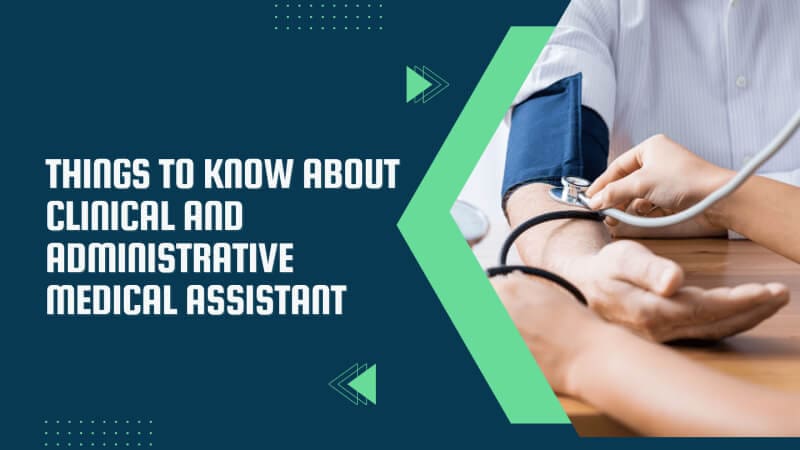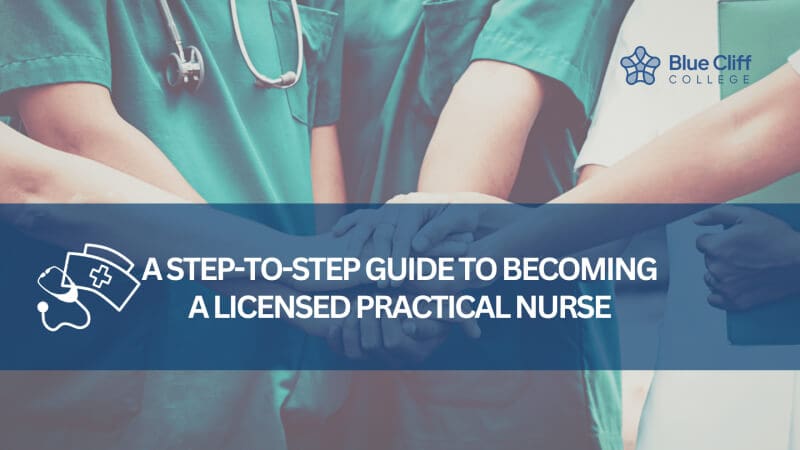Have you always wanted to find your way into a growing industry like healthcare? There are several essential roles available where you can make a real impact on patients’ lives. Becoming a clinical and administrative medical assistant is one of them. Within this role, you can assist doctors and nurses in providing compassionate care.
Learn what you need to know to become a clinical and administrative assistant and what to expect from the role.
What Is a Clinical Medical Assistant?
Physicians, nurses, and other healthcare staff rely on clinical medical assistants to provide key support for basic clinical tasks. They can also support staff by performing medical tests and clinical procedures and providing patient care.
As a clinical medical assistant, you can work in various healthcare settings like hospitals, clinics, urgent care facilities, research centers, and more.
What Is the Role of an Administrative Medical Assistant?
An administrative medical assistant handles administrative functions in the healthcare facility they work in.
You may also hear this role referred to as a medical office assistant, medical secretary, or medical office manager. Your main role as an administrative medical assistant is to help the facility run smoothly.
Important Job Duties
- Record patient history and information
- Measure patients’ vital signs
- Assisting physicians with patient examinations
- Inject or medicate patients as directed by physicians and as permitted by state law
- Schedule patient appointments
- Prepare blood samples for laboratory tests
- Enter patient information into medical records
- Fill out insurance forms
- Code patients’ medical information
- Do basic laboratory tests
- Instruct patients about medication or special diets
- Prepare patients for x-rays
What Are Some Important Medical Administrative Assistant Skills?
Customer Service
A healthcare facility is only as good as the care it provides for patients. That care goes beyond medications, tests, and lab procedures. Patients remember the interactions they have with administrative staff as well. Your positive attitude and ability to pay attention to detail could be the difference between a patient having a good or bad experience.
Tech Savvy
The majority of a medical administrative assistant’s work is done using a computer. Between maintaining patient records, scheduling appointments, checking in and checking out patients, and a litany of other digitized duties, you need to be computer competent.
You should also know your way around software programs like Microsoft Office and its products. And since most of your communications with other staff will likely be via email, you’ll need to know how to properly do that as well.
Communication
Just like customer service skills, you’ll need excellent communication abilities as you’ll be working with patients and their doctors or nurses. In most settings, you’ll be the first line of contact for patients who may have pressing questions. You’ll also communicate important patient information with other medical personnel, and you’ll be a point of contact with insurance companies and other healthcare providers.
Organized
A medical administrative assistant is often in charge of scheduling appointments, maintaining patient files, collecting payment, filling out insurance forms, and more. It can seem like a juggling act. That’s why it’s important you possess multitasking and organizational skills. Every one of those tasks is vital to keeping patients healthy and happy and keeping the facility running.
Critical Thinking
In any healthcare facility, you can reasonably expect things will not always go as planned. Whether it’s an issue with payment, a scheduling conflict, or another unexpected problem—you must maintain a cool head to resolve it. You also may need to troubleshoot issues in the office to the best of your ability.
What Is the Difference Between a Clinical Medical Assistant and an Administrative Medical Assistant?
Although a clinical medical assistant and an administrative medical assistant can work in the same healthcare settings, their roles differ.
Job Duties
A clinical medical assistant’s primary duties involve assisting doctors or nurses in basic clinical tasks like lab tests and taking vital signs.
An administrative medical assistant’s primary focus is on administrative duties such as scheduling, communicating with medical staff, and maintaining medical records.
Training & Education
Typically, an administrative assistant has fewer education requirements than a clinical medical assistant. You may only need a high school diploma to start working as an administrative assistant. However, getting some postsecondary education experience can help you stand out from the crowd. More employers may look at your resume and notice you already have some of the skills they’re looking for.
As a clinical medical assistant, you would also greatly benefit from postsecondary education. It may or may not be a requirement—depending on where you apply—but having additional education and training is preferred by some employers.
Certification
Whether you choose to become a clinical medical assistant or an administrative assistant role, there is typically no certification requirement. Just like with education and training, acquiring certification for either role may boost your chances of finding employment.
Skills
Earlier in the blog, we talked about the skills an administrative assistant needs. While there is some crossover, a clinical assistant will need to possess the following skills:
- Knowledge of routine medical procedures—you’ll need to know how to safely perform various medical procedures.
- Good bedside manner—patients need a friendly face in their time of need.
- Knowledge of medical terminology—you should be able to explain medical terminology and testing procedures clearly.
- Composure—you may find yourself in intense medical situations, so it’s important to keep a cool head to correctly perform your duties.
Can I Enroll in Online Programs?
You’ll be delighted to know there are online clinical and administrative medical assistant (CAMA) programs at Blue Cliff College. This AOS Degree Program prepares students to perform vital sign measurements, standard examinations, medical techniques, and other clinical duties. You’ll also learn basic medical office administrative procedures like reception, scheduling, coding, and more.
The Job Market for Clinical Medical Administrative Assistants
According to the Bureau of Labor Statistics (BLS), employment of medical assistants is projected to grow 16 percent from 2021 to 2031. That’s about 123,000 openings per year over the next decade. In either role, you can expect to work full-time in a healthcare setting. Here is a breakdown of some of the top employers of Clinical and Administrative Medical Assistants:
- 57% – Physician’s Offices
- 15% – Local, Private, or State Hospitals
- 8% – Outpatient Care Centers
- 4% – Chiropractors Offices
Start Your Career in Healthcare Industry
Are you ready to enter the healthcare industry? Then take the right first steps—explore the online Clinical and Administrative Medical Assistant (CAMA) at Blue Cliff College. Program graduates are eligible for the Medical Assistant Certification Exam and have the skills and training employers desire.
Blue Cliff College knows how important an education can be to starting the career you want. That’s why we offer financial assistance to those who qualify. If you have questions, request more information today.





